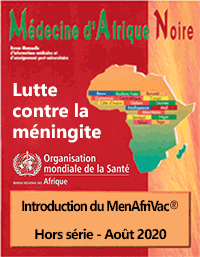
Le guide de la médecine et de la santé
en Afrique francophone
Suivez-nous :
 Identifiez-vous | Inscription
Identifiez-vous | Inscription

Suivez-nous :
 Identifiez-vous | Inscription
Identifiez-vous | Inscription

Publié en Anglais dans Odonto-Stomatologie tropicale Volume 30 - Mars 2007 pages 11-15
Auteurs : K.O. Savage, P.O. Ayanbadejo - Nigéria
The objective of this study was to determine the degree of tooth mobility and missing teeth according to tooth type of juvenile periodontitis patients attending the Lagos University Teaching Hospital Dental Centre from January 2004 to March 2004.
Methodology : Eighteen juvenile periodontitis patients were identified with an age range of 18 years to 36 years. There were 9 males and 9 females.
Result : In this study, the most common tooth mobility exhibited was grade 2 (46%), followed by grade 3 (37%) and grade 1 (17%). The most mobile tooth type were the upper incisors (23%) when considering all degrees of tooth mobility. The least mobile teeth were the lower cuspid/bicuspins (7.5%).
Within the jaws, the most commonly missing tooth type were the upper incisors (28%), more females exhibited grade 2 tooth mobility than males, while more males exhibited grade 3 tooth mobility.
Conclusion : Mild or moderately mobile teeth particularly of 1st molars and incisors should be considered a risk factor for aggressive periodontitis and should require further periodontal examination at routine dental visits particularly amongst adolescents and young adults. Regular prophylactic scaling and polishing with frequent recalls should result in early diagnosis and in preventing the rapid progression of this condition.
 Lire l'article (PDF)
Article Open access
Lire l'article (PDF)
Article Open access
Cet article est actuellement coté ![]() (1,0 étoiles) par les abonnés de APIDPM Santé tropicale.
(1,0 étoiles) par les abonnés de APIDPM Santé tropicale.
Il a été consulté 2043 fois, téléchargé 4 fois et évalué 1 fois.
Aucun commentaire n'a encore été ajouté à propos de cet article
Retour - Sommaire de ce numéro
N. B. : pour ajouter un commentaire, tapez votre texte dans le formulaire mis à votre disposition sous l'article intégral.









![]() Adresse
Adresse
![]() Téléphone
Téléphone
Revue MAN
Revue OST
Actualités
Webinaires
Espaces labos